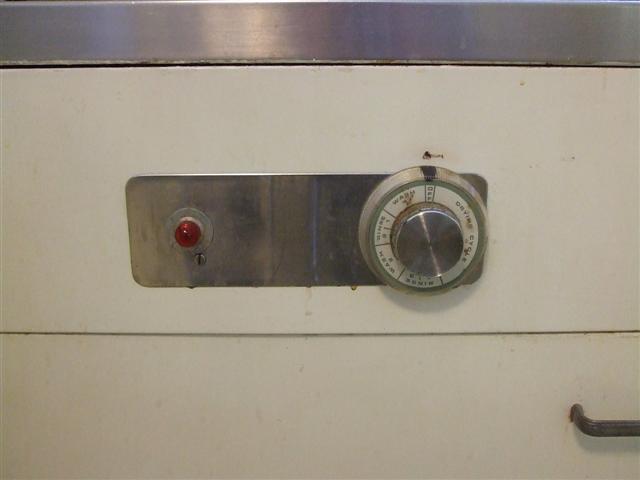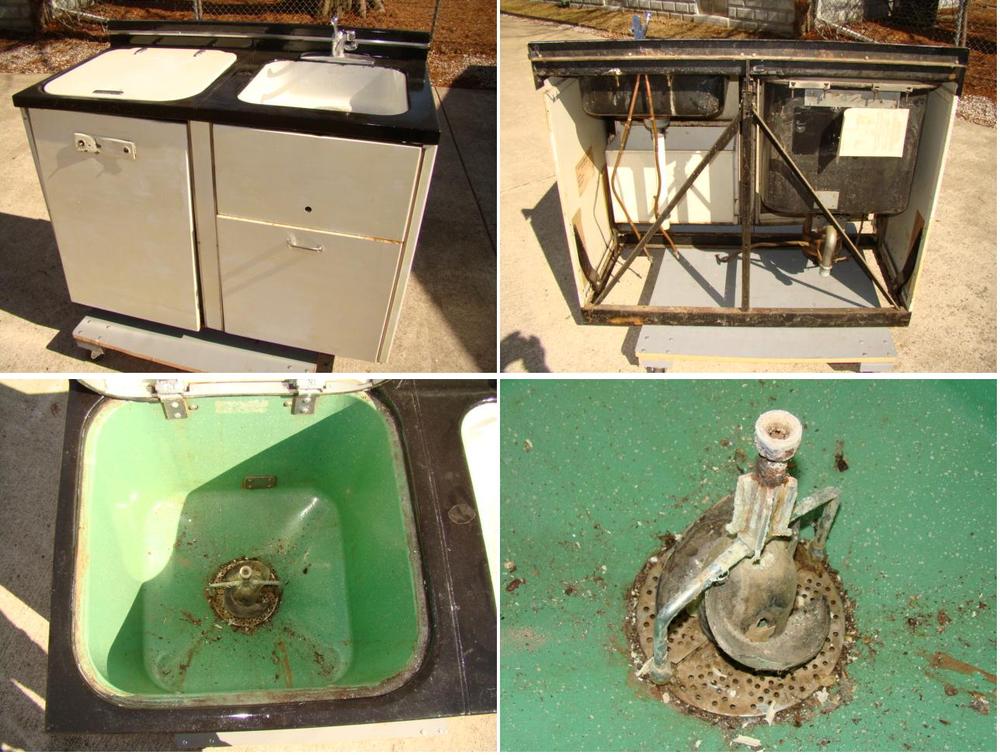|
Thread Number: 26925
30's/40's GE Dishwasher/Dispos-all Combo (Custom) |
[Down to Last] |
| Post# 413903 2/9/2010 at 09:15 (5,188 days old) by frank1492 (Worcester) | ||
|
Photo of front panel. 
| ||

|
Post# 413907 , Reply# 1 2/9/2010 at 09:33 (5,188 days old) by unimatic1140  (Minneapolis) (Minneapolis) |
||
 | ||
Post# 413908 , Reply# 2 2/9/2010 at 09:33 (5,188 days old) by unimatic1140  (Minneapolis) (Minneapolis) |
||
 | ||
Post# 413909 , Reply# 3 2/9/2010 at 09:34 (5,188 days old) by unimatic1140  (Minneapolis) (Minneapolis) |
||
 | ||
Post# 413910 , Reply# 4 2/9/2010 at 09:35 (5,188 days old) by unimatic1140  (Minneapolis) (Minneapolis) |
||
 | ||
| Post# 413914 , Reply# 5 2/9/2010 at 10:03 (5,188 days old) by dishwashercrazy (West Peoria, IL) | ||
Now THAT's an interesting conversion...
Robert, you are correct. This would have been a pre-WWII semi-automatic dishwasher. At the time of the conversion from the impeller to spray arm, I'm guessing that the left and right control knobs were replaced with the timer unit. On these pre-war machines, the left handle started the motor, and opened the water valve. Resistance on the motor was measured, and the water valve would cut off when the proper amount of water had been measured into the machine. The right handle controlled the drain valve. One needed to leave the drain open to allow hot water to fully enter the machine, then the drain was closed manually. The machine didn't have a soap dispenser, so after the water valve cut off, the operator moved the left handle to the 'off' position, then opened the lid and manually added detergent. Closed the lid and moved the left lever to the run position. After a sufficient time of washing, the drain was manually opened. When the water was gone, the drain valve was again closed, and the left lever was moved to the water fill position. The rest of the procedure was repeated for the two recommended rinses. The machine shown here is virtually the same as the 1937 machine that I have which came from Monticello, Wisconsin. Mike 
| ||
Post# 413920 , Reply# 6 2/9/2010 at 10:40 (5,188 days old) by turquoisedude  (.) (.) |
||
 | ||
Post# 413925 , Reply# 7 2/9/2010 at 10:50 (5,188 days old) by lotsosudz  (Sacramento, CA) (Sacramento, CA) |
||

The funny thing about the replacement timer knob, was that it was taken off a 68-70 Kenmore dishwasher. My parents owned that kenmore. The knob was originally backlit, with an indicator light. It is funny to see it on such an old machine. I guess the saying of everything old is new again, is true. Its cool that at least the original body and racks were saved. Odd but cool re-do. David | ||
| Post# 414051 , Reply# 10 2/9/2010 at 18:55 (5,188 days old) by westyslantfront () | ||
|
Hi Robert. Thank you for posting the pictures...they sure were fascinating. Ross | ||
Post# 414129 , Reply# 11 2/10/2010 at 00:16 (5,188 days old) by peteski50  (New York) (New York) |
||
Dishwasher! | ||

 Comes to the Rescue!
Comes to the Rescue!